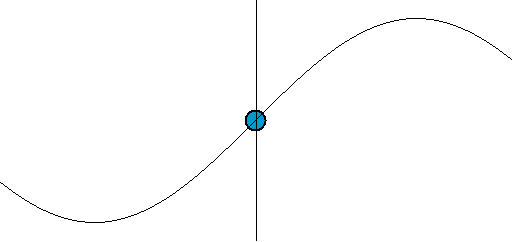 Both a wave and a particle are energy. The wave specifically is energy but the particle can be said to be matter, but since matter is energy anyways (Energy=Matter; matter-energy) just in a different form so to speak, then the particle is also energy.
Both a wave and a particle are energy. The wave specifically is energy but the particle can be said to be matter, but since matter is energy anyways (Energy=Matter; matter-energy) just in a different form so to speak, then the particle is also energy.How exactly do we explain this? If you think back to some ancient philosophies, you might recall that many of them, like Buddhism, have a lot to say about illusion.
Currently, modern physics, in dealing with the wave-particle duality or nature of existence (matter-energy) has also come to the conclusion that certain things are illusory or a kind of phenomena. To explain, imagine if you had some energy, like electricity or heat, and you were able to compress it. You need to remember pure energy is not physical, but for some reason, when it's compressed then it starts to appear physical or take on physical characteristics. This is the same principle behind all matter, where all matter is essentially just thought to be really compressed or dense energy. There are many different types of theories of course (String theory, M-Theory, Quantum theory, Relativity, etc...) but they all share this idea in common only they explain it in different ways. String theory for example, say's that matter is produced by a kind of vibrating string. This is really just an attempt to unify the wave and the particle duality. Imagine the string is represented as both the irrational circle and the rational line. Vibrations of the string essentially are thought to either produce or reflect dense energies, thus tying itself in with matter-energy duality, where energy, in the form of these strange new vibrating strings, creates or forms into matter.
If a string is just a vibrating line, and a line is just a collection of points, then it's easy to see why the wave is chaotic and unpredictable. Each point can represent a different particle; frequency; or type of wave. Similarly there are many different types of energy but all energy behaves as a wave. When we equate this concept to particles in physics, we may then understand that physical descriptions of things are unreliable, inaccurate, and down right flawed.
Brief History of Wave-Particle Physics:
Classical:
Democritus 460 BC – c. 370 BC - First to propose atomic theory that all matter was composed of individual particles. Physics essentially started with his idea, as others went on to build off it.
Aristotle 384 BC – 322 BC - Proposed that light was a disturbance in air and therefore is a wave.
Alhazen 965 - 1035 a.d. - Arabic scientist who wrote first comprehensive treatise on optics where he describes light as composed of particles.
René Descartes 1596-1650 - Very well known and respected philosopher who advocated the wave for describing nature. Originator of the phrase, "I think therefore I am."
Isaac Newton 1643-1727 - Widely considered the father of classical physics, Newton argued more for the particle nature of light.
Modern:
James Clerk Maxwell 1831 – 1879 - Discovered 4 simple equations that described the wave nature of light. The equations became the starting point for modern physics, particularly Einstein's Relativity and Quantum mechanics of the 20th century. The equations Maxwell produced described different types of light as different types of waves instead of the particles proposed by Newton and others. For example, red light would be one kind of wave energy, while blue light is another.
Albert Einstein - Physics genius of the 20th century who Defined the wave nature of light as being a constant or relationship to time and space as based on Maxwell's equations. E=MC2 where E can be the frequency or type of wave it is which is equal to the mass of the object multiplied by the speed of it's energy (Light) squared, which is ultimately a description of how energy propagates through space. Squaring, likewise, is another aspect of the dual nature in the it involves two directions to represent space like the dimensions of length and width.

0 comments:
Post a Comment